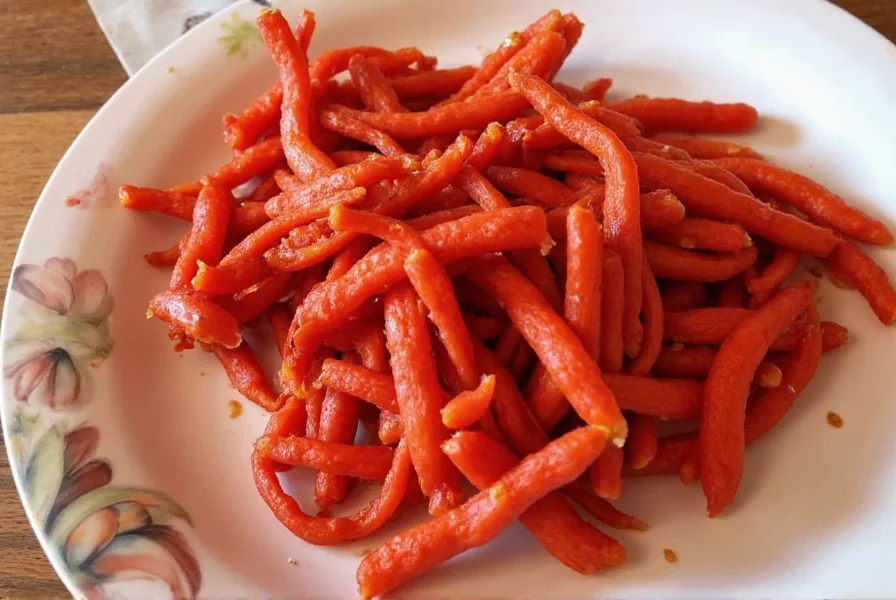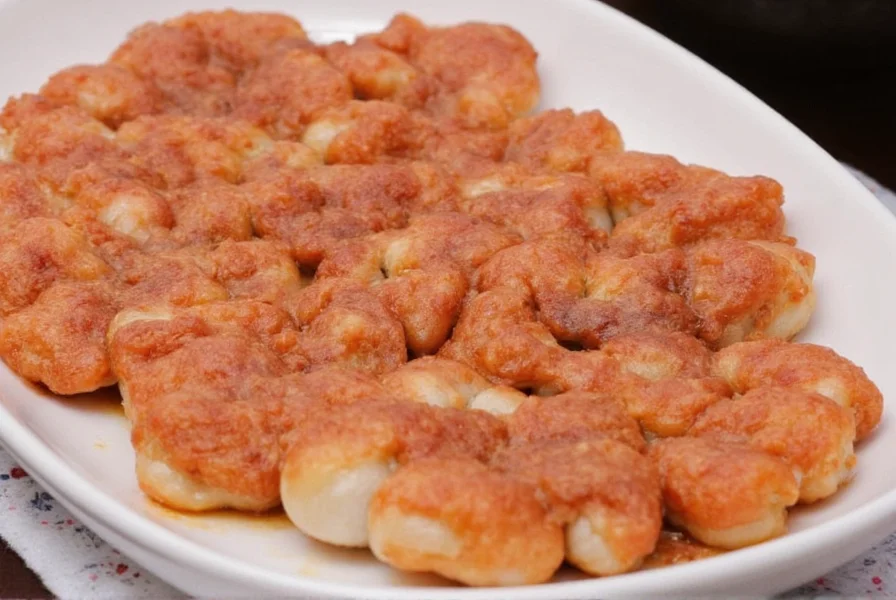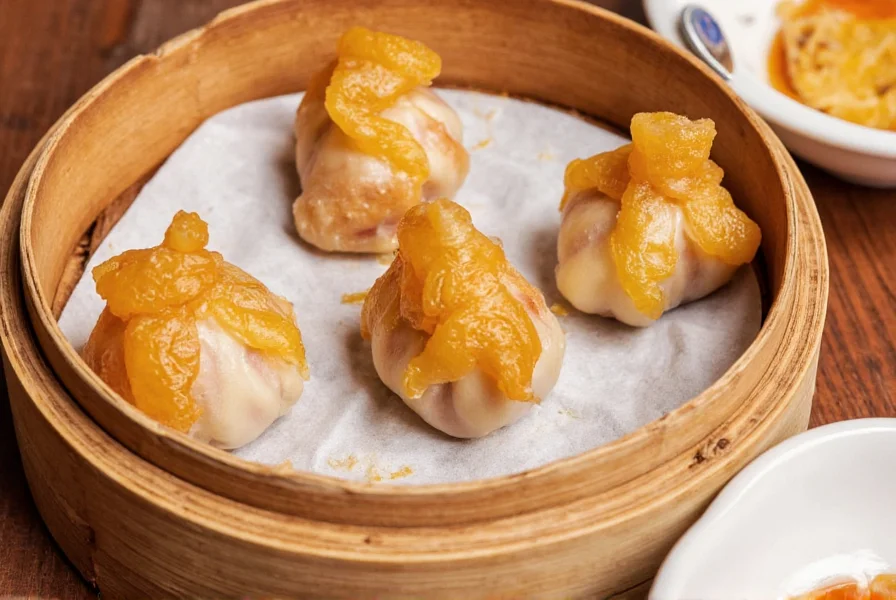When exploring authentic red ginger dim sum, understanding the distinction between this specialty ingredient and regular ginger is essential for appreciating its culinary role. Red ginger's unique characteristics make it particularly valuable in certain dim sum preparations where a subtler ginger presence is desired. This young ginger variety, scientifically known as Zingiber officinale var. rubrum, develops its distinctive color naturally during early growth stages before the rhizome fully matures.
The Botanical Distinction: What Makes Ginger Red?
Red ginger isn't artificially colored but represents a specific growth stage of the ginger plant. Harvested between 3-6 months (compared to 8-10 months for mature yellow ginger), these young rhizomes retain a thin skin that ranges from pale pink to light red. The color comes from anthocyanins—natural pigments also found in berries and red cabbage—that diminish as the ginger matures.
| Ginger Type | Harvest Time | Flavor Profile | Texture | Common Dim Sum Uses |
|---|---|---|---|---|
| Red (Baby) Ginger | 3-6 months | Mild, slightly sweet, less pungent | Thin-skinned, tender, juicy | Delicate dumplings, seafood fillings, clear broth soups |
| Yellow (Mature) Ginger | 8-10 months | Strong, spicy, pungent | Thick-skinned, fibrous, less moist | Hearty meat fillings, dipping sauces, medicinal applications |
Cultural Significance in Chinese Cuisine
While red ginger appears throughout Asian cuisines, its application in dim sum has particular regional importance. Southern Chinese culinary traditions, especially Cantonese and Fujianese, historically favored red ginger for delicate preparations. Chefs in these regions discovered that the milder flavor of young ginger wouldn't overwhelm the subtle tastes of premium ingredients like scallops, shrimp, and delicate mushrooms commonly used in high-end dim sum.
Traditional Chinese medicine principles also influence this preference. Red ginger is considered "cooler" energetically than mature ginger, making it more suitable for balancing the "heat" often associated with meat-based dim sum dishes. This philosophical approach to ingredient selection demonstrates the sophisticated integration of culinary and wellness traditions in authentic dim sum preparation.
Authentic Culinary Applications
When examining red ginger dim sum recipes from reputable culinary sources, several distinctive applications emerge:
- Seafood Dumplings: Finely minced red ginger enhances shrimp or scallop dumplings without dominating their delicate ocean flavors
- Crystal Dumpling Garnishes: Thin slices of preserved red ginger provide visual contrast against translucent wrappers
- Broth Infusions: Whole young ginger pieces gently simmered in clear soups for har gow and other soup-based dim sum
- Marinades: Red ginger juice tenderizes proteins while adding subtle flavor to siu mai and other meat-based dim sum
The preparation technique matters significantly. Authentic chefs typically use red ginger raw or minimally cooked to preserve its delicate flavor profile. When heat is required, they add it later in the cooking process compared to mature ginger. This careful handling preserves the nuanced qualities that make red ginger valuable in premium dim sum preparations.

Where to Experience Authentic Red Ginger Dim Sum
Finding genuine red ginger dim sum requires attention to detail. Authentic establishments typically:
- Source seasonal young ginger during spring and early summer when it's naturally available
- Feature it in specific, limited-time menu items rather than year-round offerings
- Use it visibly in transparent or partially visible dim sum varieties where its color can be appreciated
- Explain its presence on menus rather than hiding it among standard ingredients
Regions with strong traditional dim sum cultures—particularly Guangdong province in China, Hong Kong, and certain Chinatowns with longstanding culinary traditions—offer the highest probability of encountering authentic preparations. When evaluating restaurants, look for those that discuss ingredient seasonality and regional specialties rather than generic "dim sum" menus.
Home Preparation Considerations
For home cooks interested in red ginger dim sum recipes, proper ingredient selection is crucial. True red ginger can be difficult to find outside Asian markets during its seasonal availability (March-July). When selecting, look for:
- Thin, almost translucent skin that requires minimal peeling
- Firm but tender texture that yields slightly to pressure
- Light pink to pale red coloring at the root tips
- Moist, juicy interior when cut (drier texture indicates older ginger)
Substituting mature ginger won't replicate authentic red ginger dim sum characteristics. If unavailable, consider using half the amount of regular ginger combined with a touch of rice vinegar to mimic the milder, slightly acidic profile of young ginger. However, this remains an approximation rather than a true substitute for the distinctive qualities of genuine red ginger.

Common Misconceptions Clarified
Several misunderstandings persist about red ginger in dim sum contexts:
- It's artificially colored: The pinkish hue occurs naturally in young ginger varieties and intensifies when exposed to vinegar (as in pickled ginger), but fresh red ginger displays this color without additives
- It's significantly spicier: Actually, red ginger contains lower concentrations of gingerol (the compound responsible for heat), making it milder than mature ginger
- All pink ginger is the same: True red ginger differs from commercially pickled "gari" ginger used with sushi, which gets its color from vinegar reaction with mature ginger
Understanding these distinctions helps appreciate why authentic red ginger dim sum represents a specialized culinary tradition rather than merely a colored variation of standard preparations.
Frequently Asked Questions
What makes red ginger different from regular ginger in dim sum?
Red ginger (baby ginger) is harvested earlier than regular ginger, resulting in a thinner skin with natural pinkish-red hues, milder flavor, and more tender texture. Its lower gingerol content makes it less pungent, allowing delicate dim sum ingredients like seafood to shine without overwhelming ginger flavor.
Where can I find authentic red ginger dim sum?
Authentic red ginger dim sum is typically found in regions with strong traditional dim sum cultures, particularly Guangdong province, Hong Kong, and established Chinatowns. Look for restaurants that emphasize seasonal ingredients and regional specialties, as red ginger is primarily available March-July and used in specific menu items rather than year-round offerings.
Can I substitute regular ginger for red ginger in dim sum recipes?
While possible, substitution significantly alters the dish. Use half the amount of regular ginger combined with a touch of rice vinegar to approximate red ginger's milder profile. However, true red ginger's unique texture and delicate flavor cannot be fully replicated, as it contains different concentrations of flavor compounds due to its early harvest stage.
Does red ginger in dim sum offer health benefits?
Yes, red ginger retains similar digestive benefits as mature ginger but with less intensity. Its milder nature makes it suitable for more frequent consumption in delicate preparations. Traditional Chinese medicine considers young ginger 'cooler' energetically, making it better suited for balancing meat-based dim sum dishes without adding excessive 'heat' to the meal.











 浙公网安备
33010002000092号
浙公网安备
33010002000092号 浙B2-20120091-4
浙B2-20120091-4